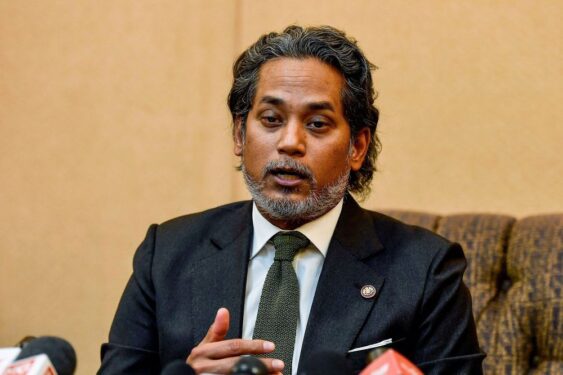EARLIER during the fourth day of campaigning on Nov 8, I had predicted that the 15th General Election (GE15) will turn out to be the toughest to predict on which coalition will form the government.
Fast forward to now as we enter the last lap of the election, it still remains tough to predict although some patterns have emerged based on many surveys.
Barisan Nasional (BN) helmed by UMNO which was the favourite to win at the start of campaigning is now trailing behind Perikatan Nasional (PN) and Pakatan Harapan (PH).
The battle between PN and PH is now a neck-to-neck one as we enter the last day of campaigning with the likelihood that either one will emerge as the winner with some 112 or 113 seats when combined with the seats of the winning coalitions in Sabah and Sarawak.
This is as good as a hung parliament which occurs when a winning coalition obtains 111 seats (or 110 because one candidate has passed on).
But surveys are basically a prediction on the probability of occurrence of an event and it can never be 100% accurate, hence that’s why a margin of error always comes along with any survey.
If you understand statistics in the context of the probability theory, you’ll be humbled enough to know that a poll which said for instance that PH has a 99% chance of winning the election does not mean it’s a sure 100% win and that the 1% chance of PH losing is something that can take place in the realm of reality.
Expect the unexpected
Similarly, a poll that says BN has a 90% chance of losing does not necessarily mean BN is going to lose with its pants down because there is a 10% chance that it can win, and this 10% chance can become a reality.
The problem with most pollsters is that when they announce the results of their poll, the small margin of losing (or winning) is taken as a fact that it will never happen in reality.
In recent years, the reliability of political polling to predict the outcome of an election has been put into question.
In the 2016 US presidential election, for instance, despite and in spite most polls had predicted Hillary Clinton as the favourite to win – albeit in a close fight because all polls are within their margin of error – Donald Trump against all odds clinched the trophy of the presidency.
One will be surprised to know on the eve of polling day that the majority of pollsters had predicted that Hillary Clinton has more than 90% chance of winning the presidency.
But this is not to say that political surveys have no value or that they are useless and cannot be used to generalise on the opinion of a huge population as alleged by UMNO president Datuk Seri Ahmad Zahid Hamidi.
The BN chairman further claimed that the current GE15 surveys are mere propaganda tool, depending on whether the ownership of the survey is vested in entities that are close to certain politicians.
BN’s sudden slump

Suffice to say here that there are conditions where even a relatively small sample can be used to generalise on a huge population as long as the sampling method involves element of randomness in selecting the respondents and the sample has an element of representativeness to the population.
Moreover as mentioned earlier, a margin of error must always be specified in a survey.
But we don’t have to look at surveys to predict the outcome of GE15. Political analysts and observers have always made their prediction at every election using their own theoretical constructs and assumptions which do not have to be quantitative.
And in most cases when the majority of analysts predicted a certain coalition would win, they turned out to be right. Rarely were they wrong.
In the case of Malaysian GEs, they were always right on their prediction with one exception, namely GE14 where PH won the election against all odds. Such a case is called an upset.
In the present GE15, many analysts are saying BN days are numbered. From the favourite to win the election among the three coalitions, it has found itself in the third spot behind PN and PH.
How can such a thing take place and what is the basis for this drop to the third position?
We can see it in a number of events. The turning point from favourite to third place happened on Nov 1 when in unveiling its candidates, Zahid dropped a number of UMNO ministers, thus reviving the internal infighting between the UMNO’s court cluster and the minister cluster at such a critical time.
Then during the campaigning period itself – on a number of occasions – it looked like UMNO is campaigning against itself like a sort of a civil war or and more like a campaign for a party election.
Zahid’s blunder
When its Sungai Buloh MP candidate, the affable Khairy Jamaluddin (KJ) bemoaned the fact that the odd is against him in that the constituency is a PH stronghold, Zahid responded by saying that KJ deserved it because Sungai Buloh is his personal choice for a constituency.

In any GE campaign, common sense has it that as a leader of the party, you never train your gun at your own comrade. You instead give them words of encouragement to spur them to victory because his victory their very victory is also yours and your party’s victory.
Then when there is an allegation that you were offering someone a minister post should BN win, you admitted it leading to the accusation that you harboured an ambition to take over as the PM – and then you argued that the PM post is determined by the King’s appointment, thus sabotaging your own poster boy.
And when the loudmouths in the UMNO court cluster are not seen campaigning for the party as evident by their conspicuous absence in media reports, this is tantamount to an admission that UMNO/BN days are numbered.
By the end of the first week of campaigning, PN and PH had overtaken BN with PN in the first position and PH coming in a close second.
Momentum for PH took place on the 12th day of campaigning when the Malay votes for UMNO was split between PH and PN.
Those on the grounds campaigning intensely have admitted to this neck-to-neck battle between the two on the 13th day of campaigning. Only an upset will cause BN to emerge as the victor.
So as the last day of campaigning comes to a close on Nov 18 – and because one can only do so much in a day – it looks like either PN or PH will emerge victorious with a wafer-thin majority which is as good as a hung parliament.
If this is ultimately the case, then it is something the rakyat do not relish as they look forward to an outcome of a winning coalition with a handsome majority that will substantially reduce their sufferings.
Only another upset will see a winning coalition with a substantial majority! – Nov 18, 2022
Jamari Mohtar is the Editor of Let’s Talk!, an e-newsletter on current affair.
The views expressed are solely of the author and do not necessarily reflect those of Focus Malaysia.









